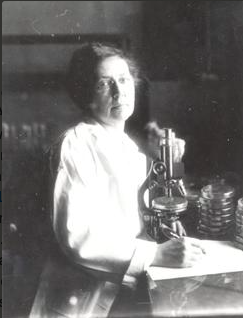
MHRA's (UK drug regulator) 57-page Public Assessment Report on Oxford/AstraZeneca vax is out: assets.publishing.service.gov.uk/government/upl… Like Oxford's publication, does not mention phase 3 trials in US & India (& so its serious adverse event), so not clear this is a selective trial report... 1/n 

...Quality assessment of the drug & manufacturing facilities based on manufacturer reports & certifications, not MHRA inspections. Presumably as with Tozinameran (BNT/Pfizer vax), this would be done by the European Medicines Agency (EMA)...2/n
...Independent Batch Testing for the vaccine is undertaken UK National Institute for Biological Standards and Control (NIBSC). Temperature requirements confirmed (does not need super-freezing) ...3/n
...A reproductive toxicology assessment is underway, results not yet available. Otherwise, they conclude there is enough pharmacological/preclinical data on this vaccine...4/n
...There is an unpublished study with "a finding of hepatitis in ferrets" but no further details are reported. (That doesn't mean it would happen in humans & the doses in animal studies are far higher than used in humans) ...5/n
...From the pooled data on immunogenicity, the MHRA concludes "these data suggest that the higher levels of immunogenicity engendered in the LDSD group are
influenced more by interval than by dose level"...6/n
influenced more by interval than by dose level"...6/n
... Primary efficacy analysis was symptomatic Covid-19 ("event") at least 15 days after the 2nd dose (same as for Moderna's vaccine; for Tozinameran (BNT/Pfizer) it was 7 days). There were 98 events for 2 "standard" doses (131 if you also count "low"-dose-first) ...7/n
...People were: 88% between 18 & 55 years; 83% white (4% Asian, 4% Black); 61% female; 36% had co-morbidities (20% rate of obesity). Overall vaccine efficacy: 70% (CI:55-81%), similar for people with co-morbidities - 73% (CI:49-86%). 62% for 2 standard doses (CI:40-76%) ...8/n
..."There is limited information available on efficacy in participants aged 65 or over, although there is nothing to suggest lack of protection." They say there was "a wide confidence interval" for this group but don't report it ...9/n
...Only 1 person with severe Covid-19: in the control group. (So again, not enough data - as with other trials, this wasn't a primary outcome.) Hospitalization: 5 people, control group only. Counting from dose 1, efficacy against hospitalization was 88% (CI:46-97%)...10/n
...In the UK study, they could also identify people with asymptomatic Covid-19 who had been negative for signs of previous infection at the start of the study. Counting both asymptomatic & symptomatic, vaccine efficacy was 57% (CI: 39-69%)(for 2 standard doses not reported)..11/n 



... Vaccine efficacy from 1st dose was 73% (CI:49-86%) (2 standard doses not reported).
Subgroup analyses of dosing interval: they didn't report less than 8 wks. Confidence intervals wide for the ones they did report: 8-11 wks & over 11 wks. 8-11 wks similar to overall...12/n
Subgroup analyses of dosing interval: they didn't report less than 8 wks. Confidence intervals wide for the ones they did report: 8-11 wks & over 11 wks. 8-11 wks similar to overall...12/n

...They pooled adverse events data across phase 1 to phase 3 trials, but 1 trial (South Africa) solicited fewer adverse events, did so for 6 days not 7, & didn't offer a "severe" grading option (grade 4)...14/n
...73% reported a systemic adverse event; 8.3% severe (vs 2.5% in control, which was usually another vaccine). The 1st doses had more & more severe adverse events (opposite to mRNA). Higher rate of severe systemic events than 18-65 yr-olds with the Moderna vaccine (3.2%)...15/n
...Rate of serious adverse events (SAE) <1%. 1 onset of MS most lesions probably pre-vax, 1 likely "short segment inflammatory myelitis": "presence or the absence of a causative association between the AZD1222 vaccine and these two cases cannot be concluded with
certainty"...16/n
certainty"...16/n
...They report that 2 SAEs were considered related by the investigator: fever of 40.5 (resolved in a day with acetaminophen), transverse myelitis (the same myelitis referred to above)... 17/n
...On balance: my concerns on trial quality not allayed. Vaccine efficacy for standard doses 60-70% depending on dosing interval in predominantly white 18-55 year olds, with wide confidence intervals. Apparently more & more severe adverse events than the mRNA vaccines. 18/18
...PS (always seems to be at least 1!): And there's still the proviso that the safety assessment for this vaccine excluded the completed Indian phase 3 trial & so it's not comprehensive for the vaccine.
• • •
Missing some Tweet in this thread? You can try to
force a refresh









